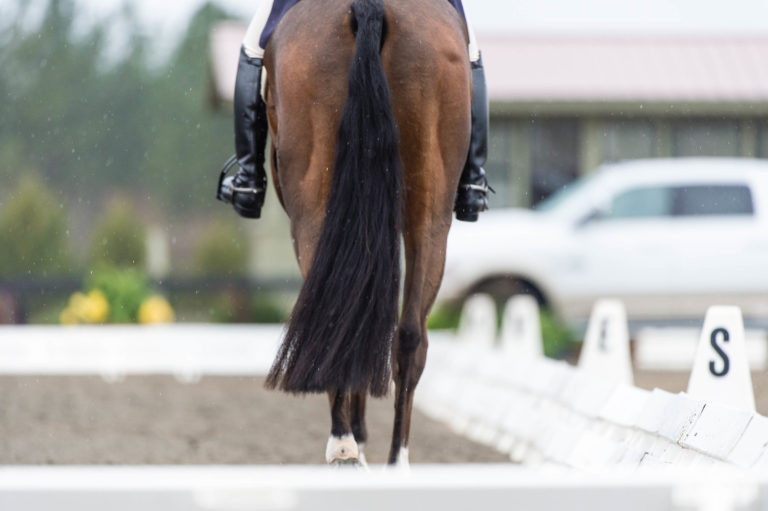For many, earning a USDF bronze medal is both an ending and a beginning. It marks a level of accomplishment that confirms a rider’s investment in the sport of dressage. At the same time, it’s really just the beginning of the more intense, upper-level work. For some riders, the bronze medal is the “end goal” in and of itself. For others, it’s a steppingstone toward the realm of collection. This applies in a special way to teen riders, such as 17-year-old Juliette Cain and 15-year-old Lily Darwin, who both recently earned their bronze medals, coached by USDF gold medalist and FEI-level competitor Katie Poag.
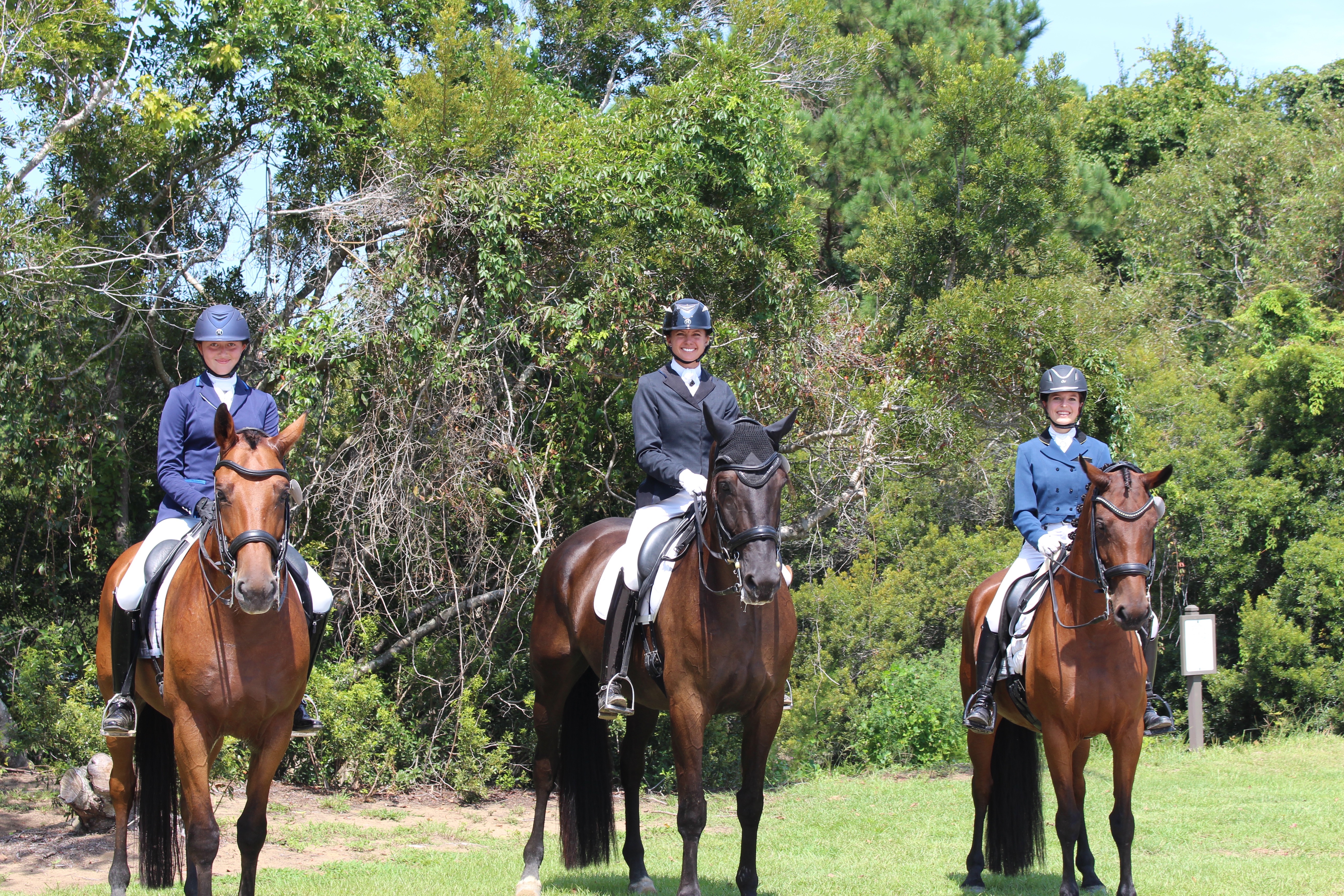
(Courtesy, Katie Poag Dressage
)
Because the USDF medal system is not restricted by age, scores that a rider earns as a teenager can still be applied toward earning a medal 10, 20 or even 30 years later. In this way, youths who work toward USDF medals are potentially integrating their learning and competitive experiences into a long-term affiliation with the sport of dressage and the USDF. The lack of an expiration date on the applicability of scores toward a medal recognizes that proficiency in dressage is often a life-long pursuit; youths like Cain and Darwin can carry scores and medals earned forward into either an adult hobby or a professional career.
Poag, who currently campaigns her Dutch Warmblood stallion, Zonnekoning, at Grand Prix and owns and operates Katie Poag Dressage near Charleston, South Carolina, views the USDF medal system as an important goal-setting tool for her students, both adults and youth. Poag herself earned bronze and silver medals as a teen and then her gold in 2009 with Rembrandt, a Friesian gelding and the first horse she successfully trained and showed at Grand Prix. According to Poag, “There are definitely more programs now for youth in dressage than there were even 15 to 20 years ago. For me, the medals were really important because the USDF didn’t have all the other youth programs they do now. Earning the scores was part of my path, my progression toward becoming a professional. Today, the medals are still likely to be a goal for talented young riders, but this goal can co-exist alongside other youth recognition programs. For teen and young adult riders today, it’s more like: You’ll accomplish this while you’re getting that while you’re working toward this.” Poag says the variety of incentives and learning currently available to young riders allows teens to find what motivates them and what is accessible based on their horse’s ability as well as their own ability, location, budget and numerous other factors.
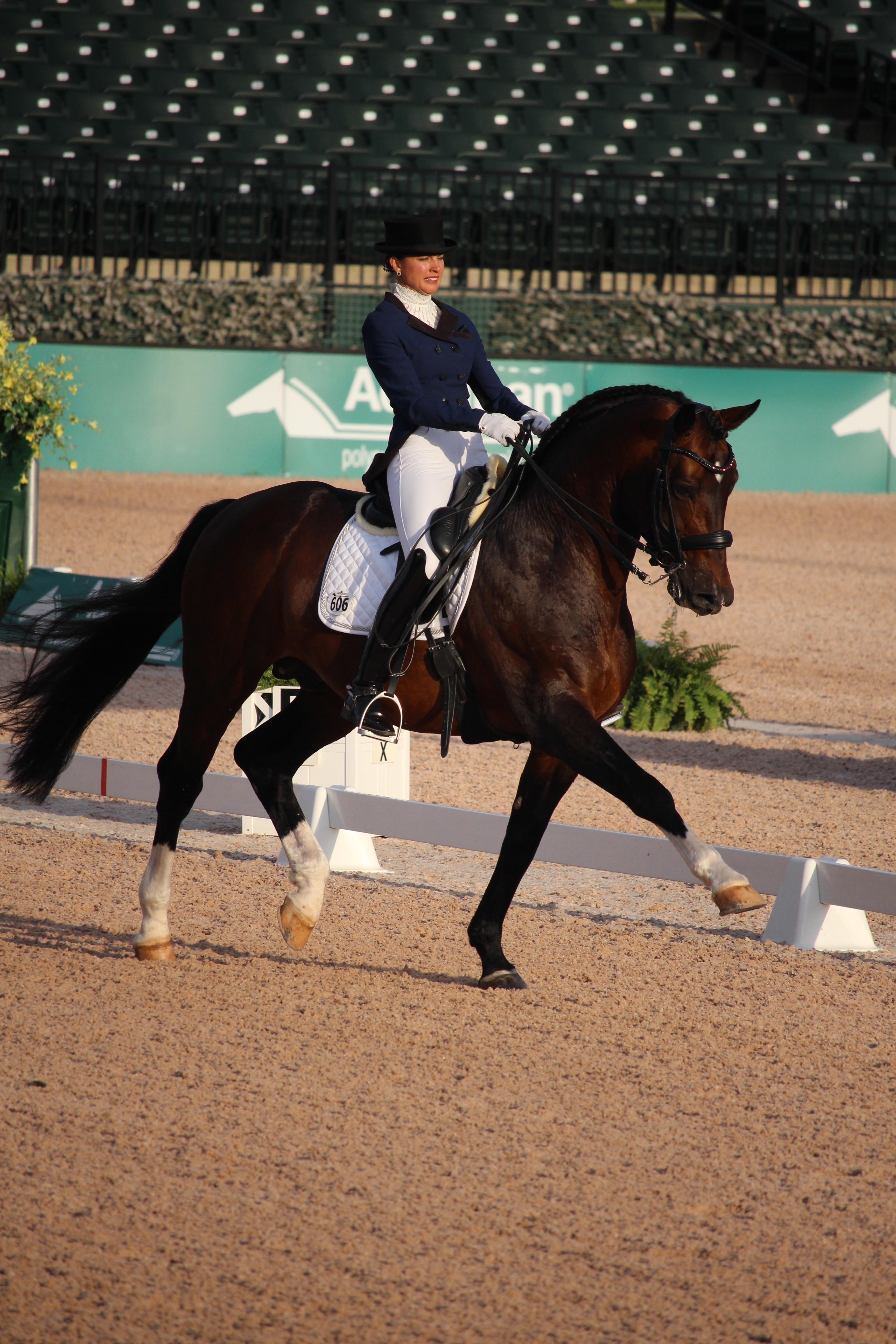
(Courtesy, Katie Poag Dressage
)
According to USDF President George Williams, earning USDF medals can be a valuable educational and competitive experience for teen riders who are learning and developing. “Junior riders are working hard to establish those all-important basic skills that will carry them forward in their riding careers, whether that’s for sport, pleasure or as a profession,” he explains. “The medal system provides a good framework for developing this foundation.” He points out that the medal system provides many of the same benefits to teens that it provides to all riders: a sense of achievement at one’s current level, recognition and a goal or incentive—“something to strive for.”
Here, Poag shares her perspective on coaching youth in dressage, including initial goal-setting, fostering commitment, building effective relationships and long-term planning. In turn, Cain and Darwin reflect on what made earning USDF bronze medals an “amazing experience!” and one that they see as just the beginning.
Initial Goal-Setting
According to Poag, “Teaching youth can be like having a blank canvas on which to paint.” She explains that teen riders typically do not have the fear issues that many Adult Amateurs experience and teens also often come without preconceived notions about dressage, which can be optimal for developing riders efficiently and correctly toward their riding goals. Poag compares pursuing dressage to learning a foreign language—it’s absolutely possible to begin and succeed as an adult, but almost certainly easier if begun in youth. On the other hand, she says teen riders who wish to pursue dressage in a more serious way face specific challenges: budgetary limits, transportation/access to the right horse and facility and the need to balance time for riding with school and other activities.
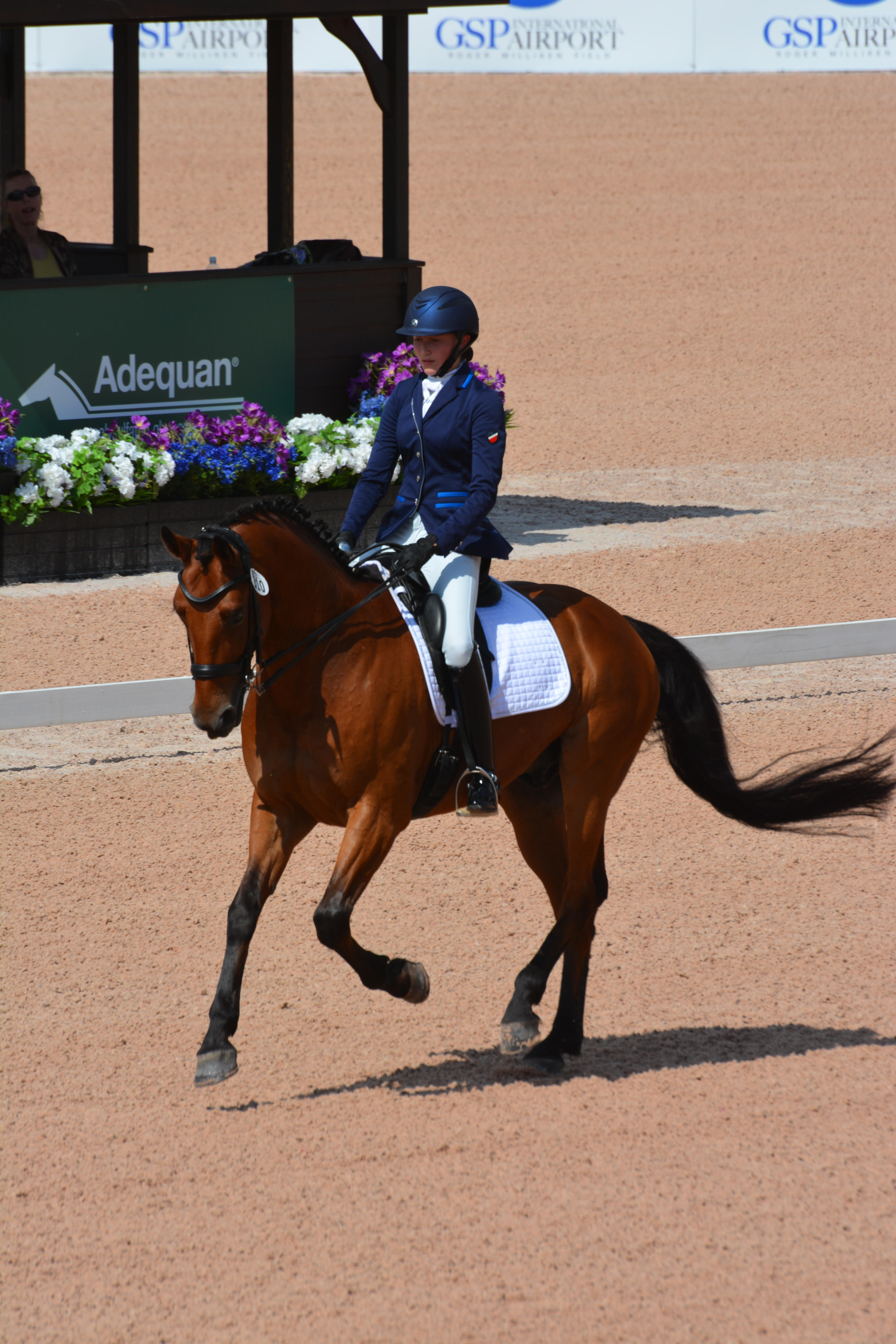
)
Both Cain and Darwin came to Poag highly motivated and with a general big-picture goal of someday riding upper-level dressage. Both were already solid riders—Cain had grown up riding in Germany every summer and competing through the FEI level in youth vaulting while Darwin had six-plus years of riding experience under her belt. Poag helped both riders set more specific goals, which included working toward the USDF medals, competing in USDF Regional and National Championships and pursuing the qualifying scores to participate in the North American Junior & Young Rider Championships.
According to Poag, “When riders have a long-term goal, anything from training a horse to a certain level or earning a specific USDF medal or someday competing Grand Prix, I work with them to identify a short-term goal and then also start planning for the long-term.” Because of the expense associated with equestrian sports, Poag says it is especially important that teens and their parents be made aware of the amount of time, effort and resources related to pursuing the goal. First steps may include leasing or purchasing a horse for a specific goal or adjusting the goal based on the horse available to the rider at the time. “While we’ll always have long-term goals in mind, each season has a realistic goal based on both rider and horse education and ability,” Poag says.
For both Cain and Darwin, achieving their initial dressage goals meant finding the right horse. Poag says there are important considerations for the search, which apply to all riders but especially to youth: budget, finding a safe horse, assessing the comfort level of the rider with that horse (Is the horse a good fit?) and the horse’s current ability—or ability through training—to become this rider’s partner. Both riders eventually found horses they could ride well at their current riding level and also progress with under Poag’s guidance. For Darwin, the horse is Charmeur, a Dutch Warmblood gelding who the team found in Holland, and for Cain, the horse is Mariska, a Friesian Thoroughbred-cross mare who came from nearby Aiken, South Carolina. For both riders, the hard work required to achieve the bronze medal was offset by the deep reward of developing their horses. Both horses are talented, athletic and willing, but neither could be described as a “finished horse.” For example, Poag says both riders had to learn how to ride the flying change as well as teach their horses the movement. According to Cain, “When I compete, I cry a little at the end of every test. Once in a while, I’m frustrated that it didn’t go well. But much more often, I cry because I’m so proud of Mariska and how far we’ve come together.”
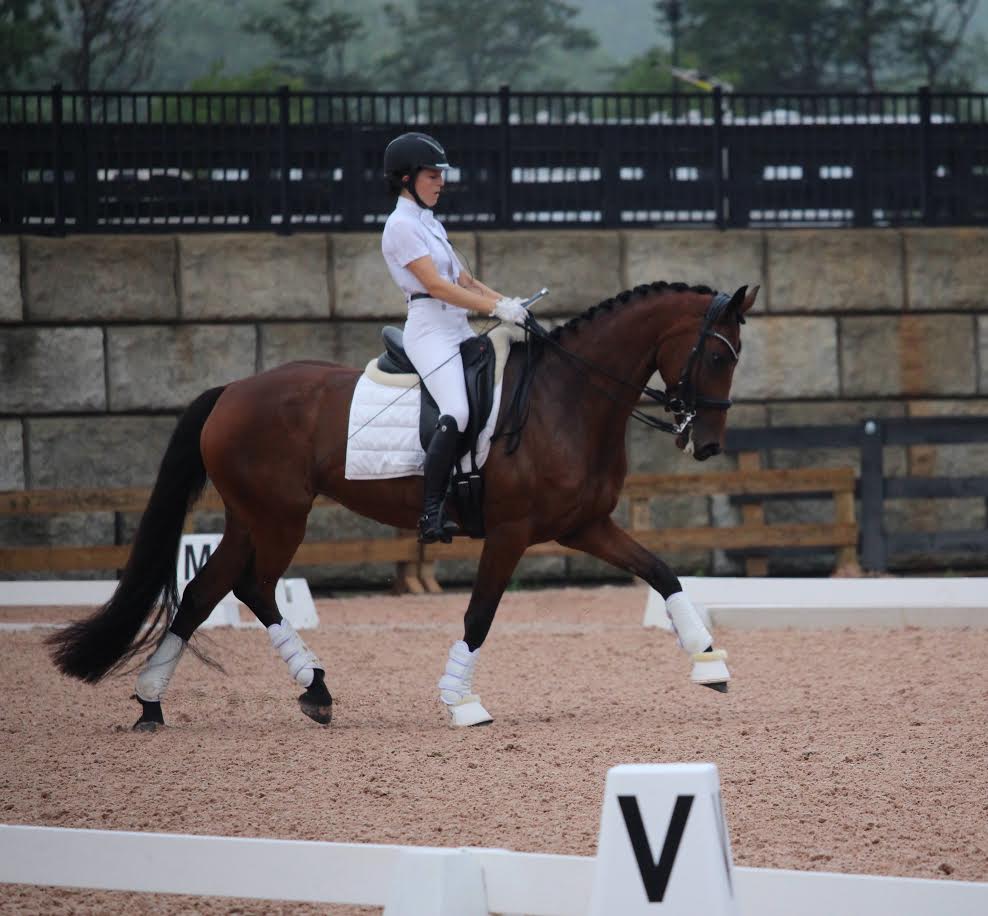
)
For Darwin, the goal of working toward the USDF bronze medal helped her understand and focus on the specific elements she and Charmeur needed to improve. “Working toward the medal means that going to shows is less about blue ribbons and more about improving my personal scores,” says Darwin. “After each test, Katie reviews the judge’s remarks and videos with me so that we can constantly work to do better the next time. If either I’ve made a mistake or my horse misbehaves during the test, Katie encourages me to go back immediately to the warm-up arena to work through our mistake. This has improved my horsemanship.”
Fostering Commitment
In addition to finding the right horses, both Darwin and Cain say that getting serious about dressage meant making choices that set their lives apart from many of their peers. According to Darwin, “Riding the way that I do has meant sometimes missing school or weekends with friends as well as giving up other after-school activities.” She says this is offset by the benefits: Riding is her “greatest joy in life” and her commitment to riding has taught her good time-management skills and made her more disciplined.
Likewise, Cain who was a sophomore in high school when she acquired Mariska, said that finally having a horse of her own meant realizing that her horse was relying on her for training and care every single day, which was exactly how Cain wanted it to be. “Eventually, I started homeschooling so that I would have more time to ride and still be able to focus on my school work,” says Cain. “This also meant I would be able to travel with Katie and groom for her at the CDI shows, so I’m constantly learning about dressage without sacrificing my academics. I could not be happier with how this has worked out!”
For both riders, training is a five- to six-day-a-week commitment and both have lessons with Poag several times each week. They will regularly attend horse shows, several of which involve overnight travel, in order to earn necessary scores and gain experience. Both riders are helpful at Poag’s barn, and Cain, who keeps her horse at home, works shifts at Poag’s farm to offset the cost of training.
Building Effective Relationships
According to Poag, “It’s important for all riders to know that an instructor cares about their development, but it’s even more important for young students to know the instructor is sincere in helping them reach their goals and dreams.” She’s quick to point out that both Darwin and Cain are talented but, more importantly, inherently motivated and even driven—both try hard and they do so consistently. For her part, Poag strives to be a strong role model, providing opportunities for growth and learning, challenging her riders appropriately and believing deeply in their dreams. “In my mind, the sky is the limit for Lily and Juliette, so I teach as their biggest fan.”
Darwin’s relationship with Poag has had a major influence on her life, not only in the dressage arena. She credits Poag with influencing her developmentally, including helping her to overcome shyness and learn determination. According to Darwin, “Katie often tells me to ride like my life depends on it and pushes me to ‘Do It NOW!’” She gives an example of taking a bad fall during her horse search and, while lying in the dirt in a foreign country, finding the grit to get up and then try the next horse. That next horse was Charmeur and he turned out to be the one.
Cain describes herself as naturally drawn to the detail of the sport of dressage and competitive. She says that in her case, Poag has taught her to be less emotional about the training, advice that has been especially important while she and Mariska were both learning the movements required for the Third Level tests. “It can be frustrating when I go through a ride knowing Mariska can do everything but nothing is working,” says Cain. “It’s hard to stay calm and patient, which is something I think a lot of riders struggle with. It’s helped to have Katie coach me to not get emotional about it, so now that’s something I say to myself.” For example, schooling half passes to the left, Mariska starts thinking of a flying change because that movement comes next in one of the tests, which can cause both horse and rider to get emotional about the movement. Cain explains, “Getting frustrated only makes things worse. If I just take a breath and really focus on making my aids clear, Mariska will usually understand what I’m actually asking for after a few repetitions.”
Long-term Planning
Both Cain and Darwin are so inspired by their experiences with dressage thus far that they aspire to big dreams. Darwin says, “Long term, I would love to attempt to make it to the U.S. Olympic dressage team. In the short term, I want to continue to work up the levels, toward my freestyle bars and silver and gold medals.”
Cain envisions making dressage training and teaching a career after college, so becoming a successful professional is her goal. “I would like to develop a horse all the way to Grand Prix myself and experience all of that,” she says. “Though I know it’s a huge dream, I aspire to compete internationally and represent the U.S. at large international competitions.”
Both riders also aspire to something much simpler, which many of us who have admired a coach or mentor can relate to: They want to emulate the person who has inspired, supported and pushed them through the realities of achieving a dream. In short, they want to be like Poag. Cain explains, “Because Katie always works so hard, it’s an inspiration for me to keep working really hard. I want to someday be able to reach her level of riding.”
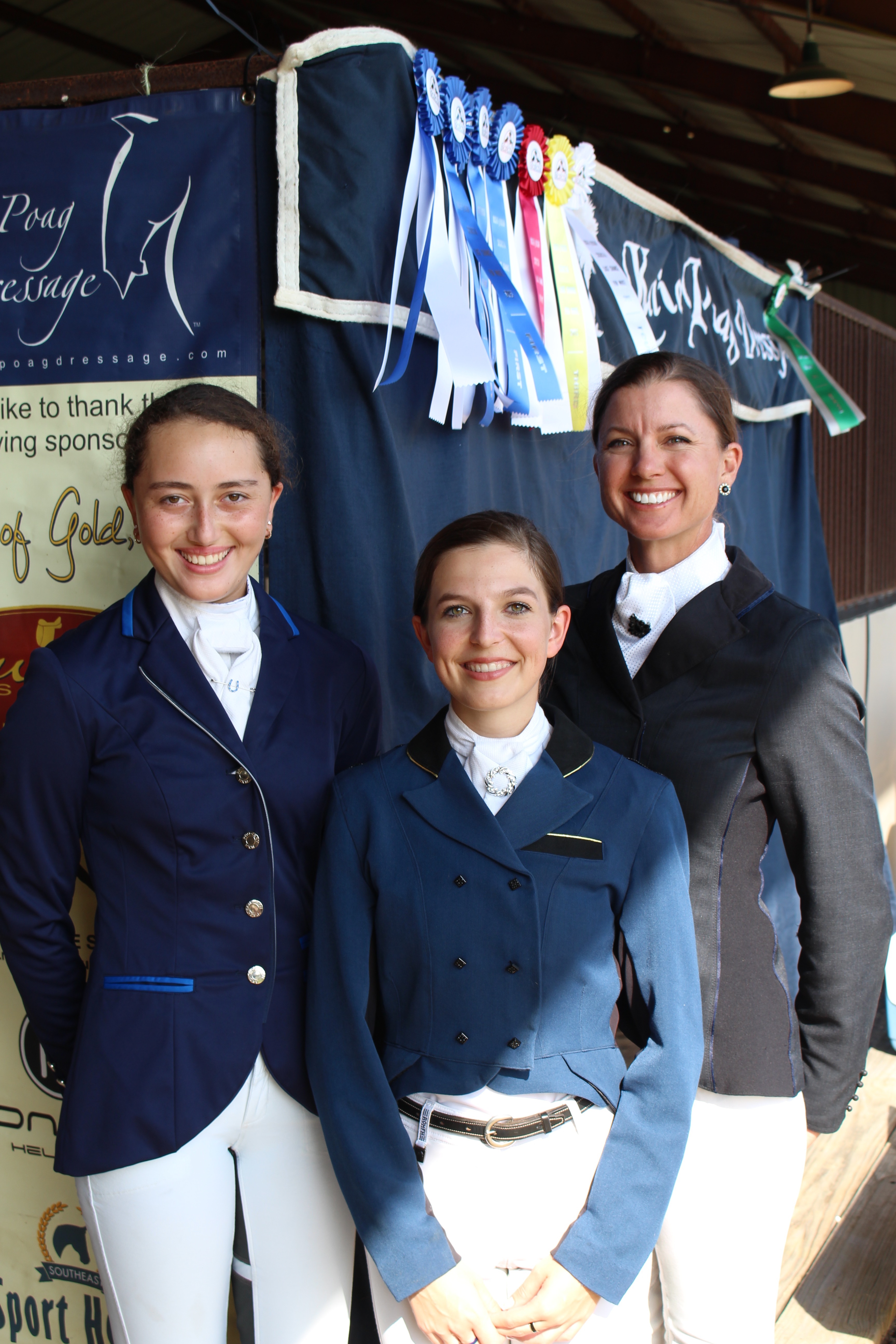
(Courtesy, Katie Poag Dressage
)
Darwin adds, “Katie has incredible discipline, which I hope has rubbed off on me. I truly do hold her up as my idol and would love to have as an amazing riding career as she has had.” In this way, the sport of dressage inspires legacy: the achievement of medals represents success within a progressive system of training and competing while the conveyance of the personal qualities needed to succeed with horses is handed from successful trainer to aspiring rider.
Rebecca Darwin, Lily’s mother, appreciates the role that Poag plays in her daughter’s life. “We joke about it, but sometimes if I want to get a message across to Lily, Katie or her partner, David Richie, are better messengers than I am,” says Rebecca. “Lily loves being at the barn with them and I think would move in if they let her!” She goes on to acknowledge the commitment of time and resources that dressage as a youth sport can demand. Her advice to other parents is to seek a trainer who will work with students creatively to figure out the best financial approach to finding the right horse and who is respectful of one’s individual situation. In order to make the commitment worthwhile, she adds, “Make sure you’ve found a well-qualified trainer and one who will work well with the temperament of your child.”
According to Williams, “In riding and in everything we do, it’s always important to set realistic goals. Good goals in riding push horse and rider out of their comfort zone a bit, but not so far as to carry either one over the edge to the point of frustration or total discouragement.” For Darwin, Cain and their coach, the USDF medal system has been a valuable goal-setting tool. Achieving, but, more importantly, working toward the bronze medal has become the springboard for deep commitment to and love of the sport of dressage.
USDF Medal Requirements
Like all of the USDF rider awards, the bronze, silver and gold medals are awarded based on scores that the rider achieves over time, not all in one year or season. Among other eligibility requirements, the rider must be a USDF member and the horse must have a USDF Horse Identification Number (HID) or Lifetime Horse Registration (LHR) at the time the scores are earned. For each award, scores at each level must be earned through two different rides and under two different judges.
• Bronze medal: Two scores of 60 percent or higher at First, Second and Third Level
• Silver medal: Two scores of 60 percent or higher at Fourth Level and Prix St. Georges
• Gold medal: Four scores total: two scores of 60 percent or higher in Intermediaire I, A, B or II and two scores of 60 percent or higher in Grand Prix.
For teens and young adults working toward the medals, it is important to note that there are several important score equivalents, which means that scores earned in tests/competitions developed specifically for Young Riders and horses can be applied toward the medals at a traditional level deemed equivalent. Namely, scores from FEI Young Rider Team and Individual Tests are score equivalents for Prix St. Georges as are scores from the USDF Developing Horse Prix St. Georges Test. Likewise, a qualifying USEF National Young Adult Brentina Cup test score is equivalent to Intermediaire II as is a score of 60 percent or higher in the FEI Young Rider Grand Prix 16–25 Test.







